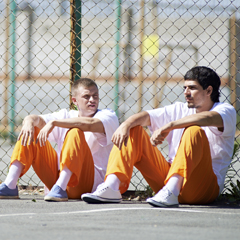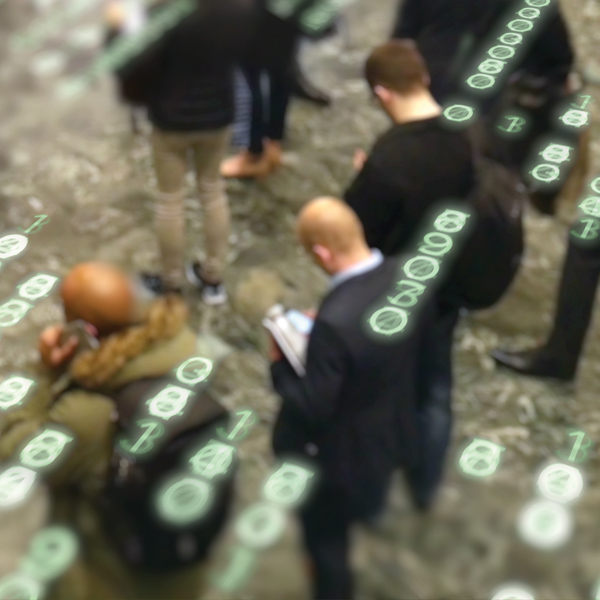On behalf of the John D. and Catherine T. MacArthur Foundation, I am pleased to join Judge Rakoff in welcoming you to this important occasion. We gather to bear witness to the creation of a project that promises to deepen the understanding of the intersection of neuroscience and the law.
Here in the home of the Mother Court, as I understand it is called, I am pleased to announce the MacArthur Foundation’s initial investment of $10 million to establish the Law and Neuroscience Project.
MacArthur works in 60 countries around the world on many issues – conservation, population, housing, urban renewal, and human rights among them. The project we launch today illustrates three themes that thread through all we do: a commitment to justice, a belief in the importance of empirical and applied research, and the faith that we can build a better future. The program we launch today bears these distinctive hallmarks.
First, our concern for justice: MacArthur assists the International Criminal Court; supports regional Human Rights Commissions; promotes police reform in Nigeria and Mexico, speaks up for fairness in America’s juvenile justice system, champions the rights of young women in rural India and of indigenous people in Peru’s rain forests. We do so because we believe that the rule of law, equitably administered, is essential to stable and successful societies
Second, we believe that sound empirical research with practical applications can help solve pressing social problems. The Foundation’s signature methodology is to create research networks that bring together scientists, scholars, and practitioners from many disciplines to work on a common issue.
Two of these networks have already created a body of work that brings scientific findings to bear on the practice of law in this country: The network on Mental Health and the Law addresses the situation of people with serious mental illnesses in the legal system. How competent are they to understand the trial process? Should they be coerced to accept medical treatment? Are they more likely than other groups to behave violently? The network in Adolescent Development and Juvenile Justice investigated how young people understand their relationship with the law and showed that their judgment was not yet mature. This had implications for the way courts assess the competence, culpability, and treatment options for young people in trouble with the law.
The networks’ findings changed attitudes and practices. We found that people with mental illnesses were, unless substance abuse was a factor, no more likely to be violent than others, reversing an old prejudice. A landmark Supreme Court decision in Roper v. Simmons, citing MacArthur-sponsored research, overturned the juvenile death penalty in 2005.
The third theme is our orientation toward the future. To work for change, we know we must be constantly seeking out fresh ideas. To do that, MacArthur recently sought advice from a hundred of the best minds in this country. We asked them to identify an emerging issue, trend, problem, or opportunity that called for timely attention and investment.
A letter from Stanford neurobiologist Robert Sapolsky riveted our attention on the astonishing advances neuroscience has made in recent decades. It is on the brink of discovering how human brains enable the phenomenon of consciousness – what physical processes lie behind the way we reason, plan, and regulate our social and emotional behaviors. Yet the criminal justice system, for which responsibility, motivation, and culpability are indispensable concepts, has not yet taken adequate account of this research.
Professor Sapolsky challenged us to bring law and neuroscience together.
Recent literature reinforced our belief that the time was right to accept that challenge. Listen to a sampling of provocative titles. In Scientific American Mind, Brain Scans Go Legal, from the New York Times in January this year and Free Will: Now You Have it, Now You Don’t,. Also, For the Law, Neuroscience Changes Nothing and Everything, from a special issue of The British Royal Society; The Brain on the Stand: How Neuroscience is Transforming the Legal System, New York Times Magazine, in March this year. Finally, from The Record, published by the Association of the Bar of the City of New York, Are Your Thoughts Your Own: “Neuroprivacy” and the Legal Implications of Brain Imaging.
And, injecting a welcome note of skepticism, from the University of Pennsylvania’s Public Law and Legal Theory Research Paper Series, The Brain Overclaim Syndrome and Criminal Responsibility: A Diagnostic Note.
These thoughtful articles raised plenty of questions and made plain the job ahead to find reliable answers.
Those answers will come by bringing neuroscientists and the legal profession together to explore how new developments in science can improve the system of justice and how legal questions can inform the work of neuroscientists. The collaboration can make possible better judgments about the causes of crime, firmer predictions about offenders’ future actions, and guidance for more sensible and effective interventions within the justice system.
That is not to say that applying the findings of neuroscience to the law will be straight-forward. Science moves quickly, overturning paradigms in the face of new evidence. When misunderstood or used prematurely, it has the potential to do harm. The law rests on notions about human nature and the mind that are centuries-old, embedded in statute and precedent.
The law views human beings as essentially rational agents whose intentions cause and explain their behavior. Many neuroscientists believe that the relationship between the brain and behavior is far more complex, and less cognitive, than the conventional notions of legal responsibility assume.
How would the law deal with theories that suggest that people’s actions are not the direct result of prior intentions, that free-will is an illusion, that consciousness itself is a mere penumbra of the brain’s activities?
Such hypotheses dispute our inherited concepts of what it means to be a person and our ideas of accountability. They undermine the foundations of our legal doctrines, institutions, and practices. But these may be the very questions the project will have to face.
But much of what the project accomplishes will be far less speculative and of more practical use. We want to produce information that can be used. In addition to research publications, the project will craft a primer on neuroscience and the law for judges and practicing lawyers; course materials for law students; a go-to website; retreats for judges, lawyers, legislators; and, over time, preliminary recommendations for using neuroscientific evidence in a judicial context. We expect to work closely on these efforts with the educational arm of the judiciary, the Federal Judicial Center, whose Director, Judge Barbara Rothstein, is here with us today.
We hope for tangible benefits from this project as the rules of evidence, lie detection practices, and the substantive criteria for criminal responsibility evolve and change.
So MacArthur feels fortunate to have made it possible for leading scientists, philosophers, and legal scholars from a dozen universities to come together with judges and others on the front lines to harness this positive potential.
We acknowledge that others, including the Dana Foundation and the triple AS have laid important groundwork for the comprehensive and concerted effort that we launch today. We are pleased to have both Edward Rover and Stephen Foster with us, the current and former presidents of the Dana Foundation.
We are grateful to many people. First among them is Arthur Singer, former Vice President of the Sloan Foundation, who is a mentor of mine and one of the best foundation officers of our time. He was a key player in the Sloan’s initiative in the early seventies that brought together the disciplines that now constitute the field of neuroscience. And Art assembled the best people to test the feasibility of this project; today’s program demonstrates his exceptional ability to bring an important initiative to life.
We thank Justice Sandra Day O’Connor for serving as honorary chair of this project; and Michael Gazzaniga, Director of the new SAGE Center for the Study of the Mind at the University of California, Santa Barbara, and Dartmouth philosopher Walter Sinnott-Armstrong for providing imaginative leadership as co-directors.
The project is ready to tackle some tough issues: free will and personal responsibility, the justification of punishment and treatment, the nature of pain, truthful testimony, privacy of thought and intention, and bias. But it will have three initial areas of focus: brain damage, addiction, and decision making by people with medically normal brains. More from the panel on these subjects in a minute.
We are dealing with large and important issues in this initiative, and we realize that they are not likely to be resolved quickly. But over the next three years we expect to
make a start on:
• Increasing the visibility and effectiveness of a new field at the intersection of the law and neuroscience;
• Showing the usefulness of neuroscience for law, when appropriately applied;
• Educating those who work in the legal system about neuroscience, its promise and pitfalls;
• Encouraging researchers in neuroscience to focus on work that has practical application, especially to the law:
• Exploring the theories that inform our social and legal norms of responsibility, guilt, and motivation in the light of what we know about how the brain functions;
These are MacArthur’s goals, and the goals of the project.
To help bring these important issues to life, let me call on Professor Michael Gazzaniga, co-director of the Law and Neuroscience project. He is author of The Cognitive Neurosciences III, recognized as the sourcebook for the field. His many published contributions include The Social Brain, Mind Matters, and, most recently, The Ethical Brain. I cannot imagine a better person to lead this significant undertaking.
Thank you.




